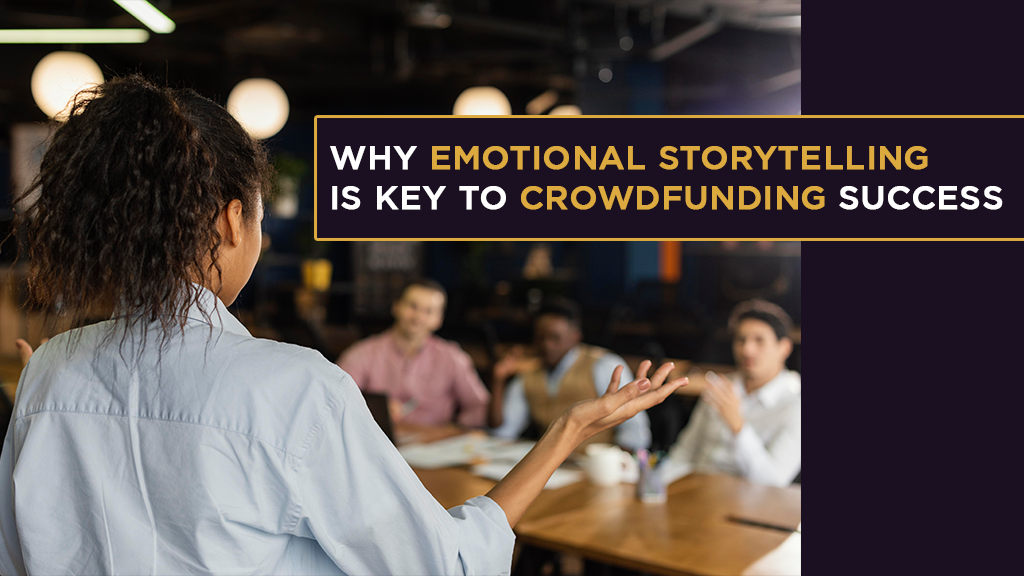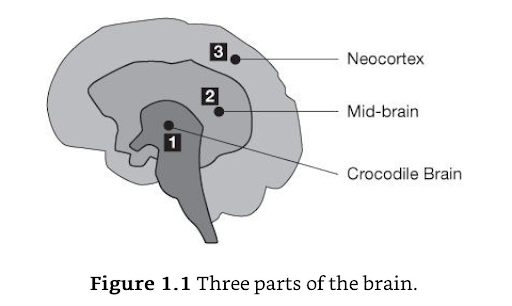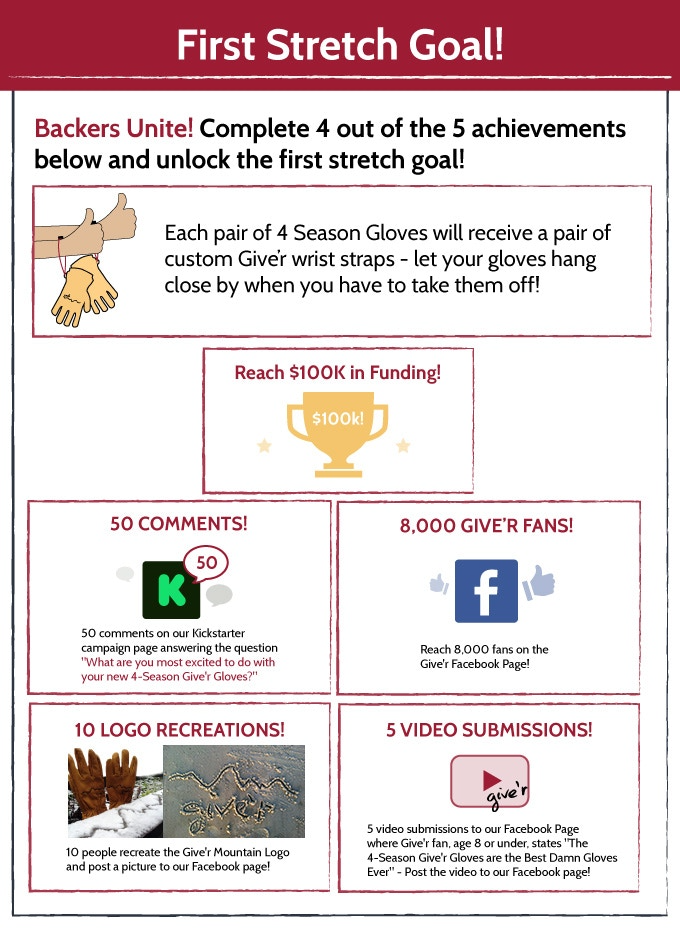
Dale Carnegie once said, “When dealing with people, remember you are not dealing with creatures of logic, but with creatures of emotion.”
The best marketers realize this. Think back on some of the most iconic ad campaigns in recent years. Always’s #LikeAGirl campaign. Gatorade’s “The Boy Who Learned To Fly.” Apple’s “Think Different” What do they have in common? They all make us feel something.
Today, let’s learn how to leverage emotional storytelling in your crowdfunding campaign:
- The science behind emotional storytelling
- Crowdfunding success stories
- Crafting your crowdfunding story
- Understanding your target audience
- Maintaining emotional engagement
Contents
The science behind emotional storytelling
Making emotional connection through storytelling is important because we make purchasing decisions based on emotion over logic.
Consumer psychology has repeatedly shown that emotions influence what we buy:
- Functional magnetic resonance imaging (fMRI) shows that consumers primarily use emotions, like personal feelings and experiences, rather than information, like brand attributes, features, and facts, when evaluating brands (Psychology Today).
- In an analysis of the IPA dataBANK, which contains 1,400 case studies of successful advertising campaigns, campaigns with purely emotional content performed almost twice as well as campaigns with purely rational content.
In his book Pitch Anything, Oren Klaff describes three areas of our brain responsible for decision making.

- The neocortex analyzes and solves complex problems
- The mid-brain determines meaning of things and social situations
- The old brain, or crocodile brain, filters incoming messages
The neocortex processes highly detailed, complex information. When you explain your product through logic, numbers, and abstract concepts, you appeal to the consumer’s neocortex.
But before your message reaches the neocortex, it has to get through the crocodile brain. The crocodile brain is primitive; it likes simple, obvious chunks of data rather than abstract ideas. Its main focus is survival. This is the part of the brain that activates emotions and fight-or-flight response.
The crocodile brain is essentially your brain’s spam filter. If you can’t break down your idea in a way that is interesting or emotional or easily digestible, you can’t gain entry to the higher-level neocortex. Without emotional storytelling, your idea goes straight to the brain’s “junk bin” no matter how rationally useful or innovative your product is.
Emotional storytelling in crowdfunding
The most important asset for emotional storytelling is your campaign video. It is one of the first things someone sees when they land on your Kickstarter or Indiegogo campaign, and its main goal is to convert viewers into buyers.
We’ve worked with entrepreneurs from over 40 countries and raised over $100 million in crowdfunding revenue. Here are some of our favorite Indiegogo and Kickstarter success stories that demonstrate the power of storytelling crowdfunding.
BusyBox gets straight to the point
The crocodile brain is extremely primitive and easily bored. If you don’t grab your viewer’s attention in the first 5 seconds, you’ve already lost them.
In our BusyBox campaign video, we begin with an emotional pain point — upon being interrupted, our protagonist sighs in frustration and buries his face in his hands. We then immediately introduce the solution — BusyBox, a digital do-not-disturb sign that makes work-from-home just a little bit easier.
All this happens in the first 5 seconds. Your campaign video needs to get straight to the point. Start with the #1 reason why your backers should buy your product.
BusyBox raised $329,938, reaching its funding goal by 1,789%.
1Hour break shares their “Founder’s Journey”
Vu and Allison, husband-and-wife duo and inventors of 1HourBreak, use one of the most common crowdfunding story templates: “the founder’s journey.”
The founder’s journey is a three-act story:
- You, the founder, encountered a significant problem.
- You tried all the different available solutions to no avail.
- You took matters into our own hands, sought an ideal solution, and invented your own product.
1Hour Break raised over $100,000 without ad spend. They continued using their campaign video as they scaled and transitioned into a thriving e-commerce business.
Author clock shows rather than tells
Sometimes your product doesn’t solve a very relatable problem. Author clock, a clock that tells time through book quotes, is simply fun and innovative.
To show rather than tell the value of Author Clock, we inspired feelings of fun, light-heartedness, and quirky innovation.
Our audience resonated with that. Author Clock raised over $1.3 million on Kickstarter.
Top shelf camera bag keeps it simple
Notice how we keep the language short, simple, and clear. Remember the crocodile brain doesn’t do well with complex information and high-level reasoning.
Don’t over-complicate your features. Cut out all extraneous information. At this stage, the viewer isn’t interested in knowing every colorway or super technical engineering details.
In our video for Top Shelf Camera Bag, we simplified our messaging by asking ourselves 5 questions:
- What problem does your product solve?
- How does your product solve it differently or better than others?
- What are some features that help your product solve the problem better? How do they work?
- What are some concerns people might have about your product?
- Why should I back your campaign?
We then answered these questions with simple, one-sentence answers. No compound sentences allowed.
The message got through to viewers. Top Shelf raised $1,014,442 on Kickstarter.
Crafting your crowdfunding story
How do you use emotional storytelling in our own campaign video? It starts with a good script. Here’s the script template we’ve used for hundreds of clients:
- Hook
- Introduce the product
- How it works
- How to set it up
- Key features and benefits
- Use helpful instances
- Closing summary
- Call to action
We’ll share an initial draft of our BusyBox campaign video and break down each section line by line.
Hook
The hook is all about grabbing a viewer’s attention. The easiest way is to state the problem or the pain point your market is experiencing, through either a question or statement. Here’s how we did it for BusyBox:
*Rolls up chair*
*Turns on computer*
*Gets ready to work*
*Roommate BUSTS in*
“HEY MAN! YOU BUSY?”
*Leans back, sighs, and swivels in his gaming chair in frustration*
Yes.
You are busy.
And it’s time you let your house know it.
Introduce the product
Now that you’ve hooked the viewer with the problem, it’s time to present your product as the solution.
Meet BusyBox.
The wireless status box that helps you work uninterrupted and enter deep focus at home.
How it works
Clearly and simply explain how your product works.
BusyBox comes in two forms: Standard and Digital.
BusyBox Standard lets you slide in a choice of 6 messages to tell everyone in the house not to bother you.
BusyBox Digital lets you create and display your own custom messages or images to say “Leave me alone” however you want.
How to set it up
Clearly and simply explain how to set up your product.
It’s easy.
Mount the base to your door.
Choose or create your message.
Turn it on.
And get to work!
Key features and benefits
Go through each of the main benefits and supporting features of your product.
BusyBox will let everyone in the house know you’re busy, so you can keep working without interruption.
Use the app to wirelessly turn BusyBox on and off. Or use the manual button if your phone is occupied.
You can even use Siri or Google Assistant for a complete touch-free experience.
Or sync with apps like Google Calendar to fully automate BusyBox to your schedule.
The app lets you choose colors and lighting modes to match your aesthetic and grab attention.
If you have multiple BusyBoxes, the app also allows you to group and control them all at once.
Customizable covers let you further personalize your BusyBox to match your style.
The battery is long lasting and quick to recharge — keeping your door wire-free.
Use helpful instances
Explicitly state the places where your customer would use your product.
Whether you’re working remotely, video conferencing, streaming, recording, studying, editing, gaming, meditating, or even journaling, BusyBox will make sure your time and space stay interruption-free.
Closing summary
Reiterate the problem and the solution.
Staying focused and productive at home can be a challenge.
With BusyBox, it doesn’t have to be.
Call to action
Tell them to buy your product!
Back our campaign today. And reclaim your focus with BusyBox.
Understanding and connecting with your audience
It’s surprising, but 59% of all crowdfunding campaigns fail. When we tell people this, most are shocked and then immediately ask…
“Why?”
Well, the answer usually leaves them more shocked.
The answer is: They didn’t position their product correctly.
That’s right. The number one reason that products don’t succeed is failure to understand and connect with the right audience.
Case in point: When I say Old Spice, what comes to mind?
Probably their hilarious and crazy commercials. But many people don’t remember that Old Spice’s positioning used to be quite different.
A long time ago, the brand appealed to an older male demographic, but by the 2000s they were seeing sales decline rapidly. They knew they had a great product, but they were no longer appealing to the right audience.
In 2010, they released a new ad, “The Man Your Man Could Smell Like.” The ad quickly became a viral sensation, particularly among the younger, internet-savvy audience that Old Spice was trying to capture.
Old Spice did nothing to change their product. All they did was change how they connected with their audience. And the result: Sales increased by 125%.
Before you write your script, make sure you know, not just think you know, who your target audience is. What do they like? How do they feel about your product? What do they resonate with?
The last thing you want to do is sink hours and dollars into writing, shooting, and editing an ad that targets the wrong demographic. Invest time in researching and testing your positioning before you draft your script.
Maintaining emotional engagement throughout the campaign
To maintain momentum, keep your backers emotionally engaged throughout the campaign.
Campaign updates are the best way to communicate with all your backers at once. They build trust and keep your backers in the loop.
Stretch goals reignite the initial excitement of your campaign. After you achieve your funding goal, stretch goals encourage backers to hit additional milestones to unlock extra features, upgrades, and enhancements. They are fun, they build community, and they are super satisfying to reach.
Here’s an example from our campaign, Give’r Gloves, which raised $270,942 on Kickstarter and Indiegogo InDemand.

Personalized communication also goes a long way. When someone backs your project, send them an email thanking them for their support. Stay on top of comments and direct messages. Answer questions and concerns promptly and professionally.
We’ve seen project creators start strong and then ignore their backers for the rest of the campaign. In the end, many backers canceled their pledges, and those campaigns ended with less funding than they had on launch day.
So engage with your backers. Listen to them, communicate with them, and keep nurturing the interest and enthusiasm they felt day one.
Final thoughts
Emotional storytelling is key to nailing your crowdfunding campaign. Today, we discussed:
- Why successful ads target emotions over logic
- Storytelling crowdfunding success stories
- Our step-by-step crowdfunding storytelling process
- Understanding and connecting with your target audience
- Keeping backers emotionally engaged
Storytelling in crowdfunding: Frequently asked questions
How can I ensure my story resonates emotionally without being overly dramatic?
To avoid being overly dramatic, focus on product value, get to the point, and keep it simple. Emotional storytelling doesn’t mean you need a professional camera or Oscar-worthy performance. A video shot on your iPhone in your living room can raise you more than a $50,000 video that’s too focused on being “cool” and “professional.”
Want proof? Here’s a video we edited for Give’r Mittens, 100% shot by the founder Bubba and his team on GoPros and iPhones. Our only two directions for them were 1) Actually do all the things you’re promising and 2) Make sure it’s clearly and fully captured on camera.
Give’r raised $1.3 million on Kickstarter, and those mittens are now sold in stores like REI and HuckBerry across the nation.
What are the key elements of an emotionally compelling crowdfunding video?
Your crowdfunding video should answer the question: What value does your product provide? The key elements of an emotionally compelling crowdfunding video are:
- Hook
- Introduce the product
- How it works
- How to set it up
- Key features and benefits
- Use helpful instances
- Closing summary
- Call to action
How often should I update my backers to maintain emotional engagement?
Campaign updates keep your community engaged and build trust. We recommend posting campaign updates about once a week during your campaign. Respond to comments and direct messages regularly and promptly.
Can emotional storytelling be effective in any type of crowdfunding campaign?
Emotional storytelling can be effective in any type of crowdfunding campaign. When developing your story, ask yourself:
- What’s the biggest problem your product solves?
- What other solutions are there to this problem and why don’t they work?
- How and why is your product different?
If you can concisely, simply, and impactfully answer these questions, you can harness the power of emotional storytelling. We’ve used this formula on all kinds of campaigns, from hotels to mittens to shovels to electric scooters.
Why is making emotional connection through storytelling important?
Emotional storytelling is important because the brain processes emotional stimuli much more quickly than rational information. Before consumers evaluate your technology, features, manufacturing, or credibility, they have already made snap judgements based on how you made them feel. That’s why emotional ads perform better than ads that rely solely on rational thinking.




